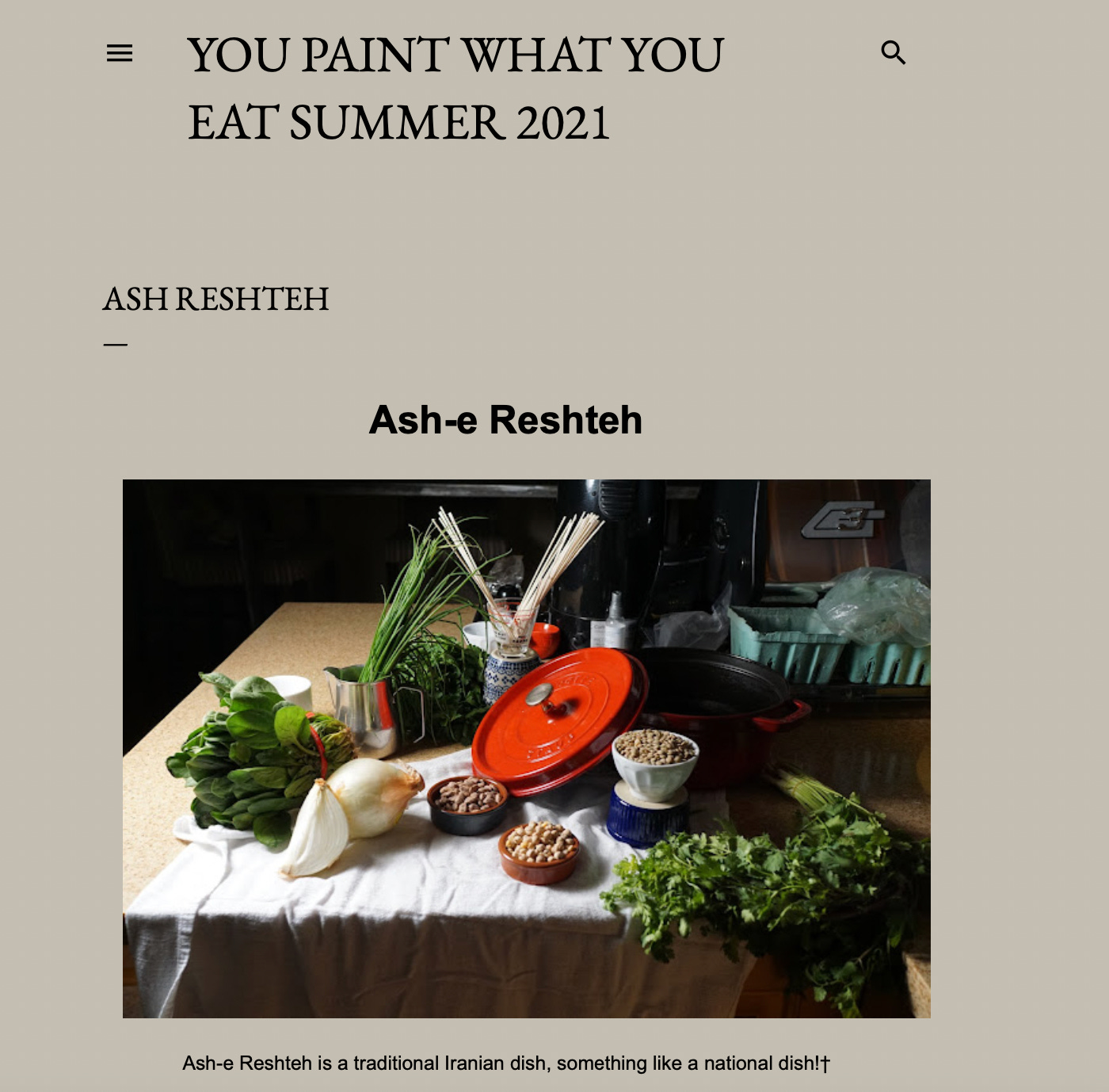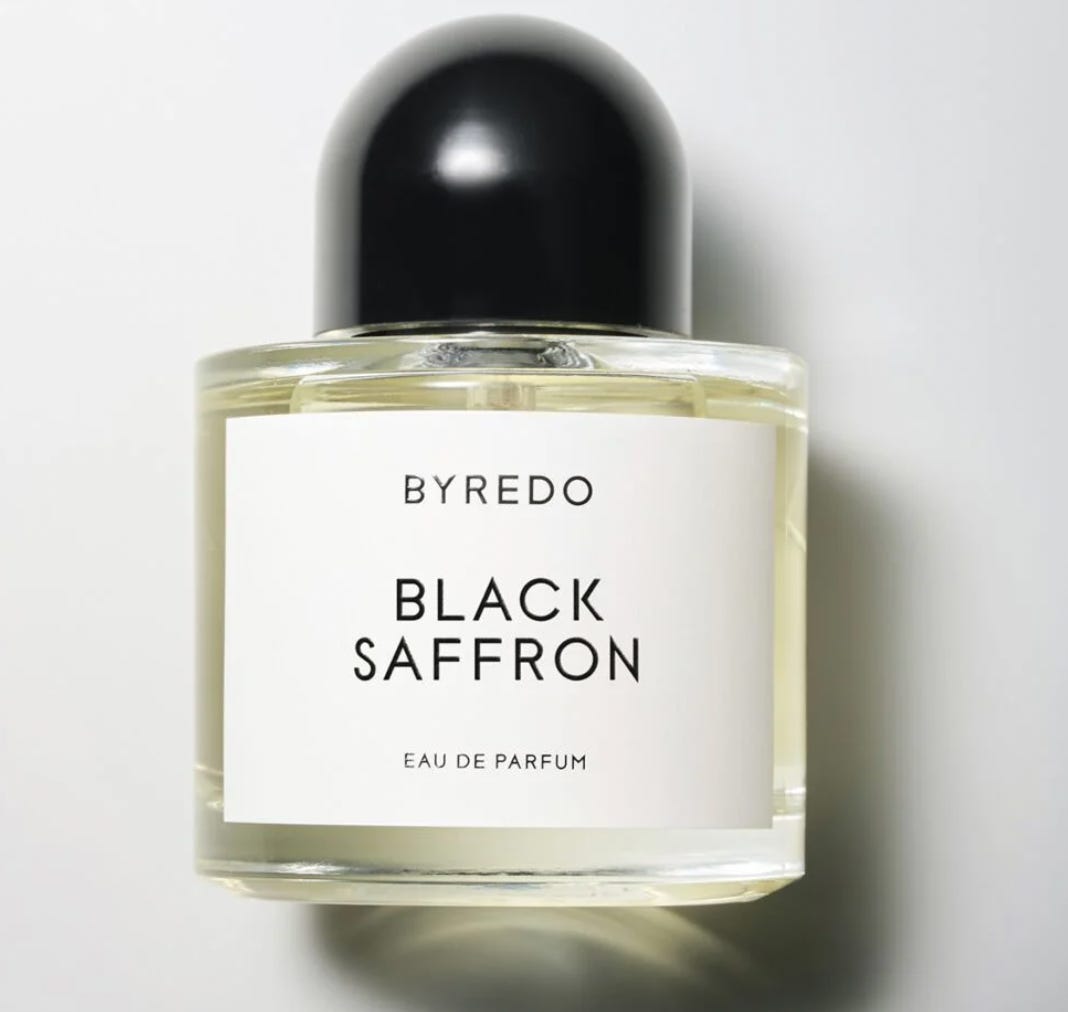Happy New Year. I hope the year 2022 will reveal itself as e x p a n s i v e for every one of you.
I realize that this newsletter orbits around discovery. Discovery of small things, of delightful things, of sensory things, of challenging things, of things that offer a bit of pep for the act of being. My ‘discovery’ process is in large part fueled by the wonderful people who text me articles they think I’d like, tip me off to must-listens, send me images of food and links to recipes, and increasingly, fragrance recommendations. I’ll always endeavor to give credit where credit is due! And I appreciate being a receptacle for wonderful recs, so keep ’em coming.
As with the last newsletters, the below is divided into sensory subcategories so feel free to skip to what interests you. These are some things occupying my mind and that I would gush about if we met for coffee this week.
I've also thought it might be interesting to add a new section about a perfume recommendation from someone I trust. This one is courtesy of Tania Strauss, a Berlin-based writer, and also my oldest friend.
If you missed the last newsletter you can read it here.
Scent
Soothers
Much has been — and will be— made of scent's power to affect our wellbeing.
Our sense of smell is processed through the limbic system in the brain, the most primordial part which includes the hippocampus and the amygdala. This primitive brain is involved in our behavioral and emotional responses, especially the instincts we need for survival. If the oldest part of our mind is predisposed to intuit danger by certain smells, it can be extrapolated that others can bring us to attention, cause us to feel reverent, or make us feel safe instinctually.
Harnessing smell has long been an avenue of reliable healing modalities, either through chemistry or plant medicine. Smelling salts, once used by boxers as a stimulant, contain ammonia which causes irritation to nasal and lung membranes thereby jolting the smeller to alertness. The molecules in other oils help clear the sinuses and bronchial pathways, such as my favorite inhaler Olba’s (a blend of peppermint, eucalyptus, cajeput, wintergreen, juniper, and clove essential oils). These are examples of truly functional scent-delivered medicine in my mind.
Right now it is very marketable to claim that scent can deliver anti-anxiety benefits or even nootropic effects (as a stimulant to enhance brain functions). Science allows us to derive the constituents and mimic scent profiles of real-world things on a molecular level. With technology such as a GCMS analysis, we can “bottle” the forest for relaxation, for example, in this fragrance, or recreate the sensory alertness of a coffee break.
I’ve interviewed a marvelous perfumer, Julie Elliott of In Fiore, who stands firm that perfumery is medicine in the strictest sense, meaning every single olfactive ingredient is chosen for specific properties absolutely tied to results.* I expect you'll see more and more tying of scientific claims (specifically fragrance ingredients to curb anxiety and panic attacks like lavender, bergamot, orange, aloe, black tea) to all categories of care products and perfumes, especially as an entire industry contends with selling things to us in the third year of a pandemic.
Whether or not they “work,” I think, depends on your up-front investment. If every time you felt the wave of worry, you habituated yourself to smelling a small vial, I think it would ‘work’ like a tether, a pull of relief actively committed to memory. A veil of "contentment" relies on creating that connection, not the 'voila' opening of a vial of mandarin oil.
I think of myself as a little kid, desperate to believe in magic and talismans and trinkets. I think of my own daughter, who takes a little rollerball essential oil frankincense blend to a sleepover to sniff if she feels that she misses us. A handkerchief doused in camphorous eucalyptus helps her believe her cold will heal overnight. The presence of such smells can distract the mind. It takes up space therefore it's working.
Does it need to be these scientifically vetted ingredients, measured impulses on a cell-level? Could it be the freesia smell of your grandmother’s silk blouse, the heavily concentrated tobacco remnants of an old pipe, even the salty play-doh smell of your youth? I don’t need proof that these do more for my central nervous system precisely because of their memory properties, not medical ones.
I am incredibly curious about the science and scope of this frontier. Yet truthfully, I prefer to look at scent less as a reliable therapeutic and more as theatrical, pliable set design — one that can be reconfigured any which way — for the stories you tell yourself. This can be just as healing.
Fragrance can be a soother of the heart, a change of setting, a protective bubble, a portal to the past or future yet undiscovered. Go beyond prescription: seek out more of what you didn’t know you needed. Mine your memories and identify the influences.
I’d love to hear what they are.
A young Odessa sniffing watercolor flowers that have overwhelmed the paper they were painted on.
*I’d be happy to share excerpts of this interview with Elliott in a later newsletter as it was a shame that it went unpublished at the time.
Taste
Ash Reshteh
This herby bean-and-noodle soup is a Persian standard. My good friend Saba made it for us nearly 2 years ago. I promised myself then I would try my hand at making it, and this holiday gave me just that window—further incentivized by two wonderful happenings:
Saba sent me a version of the recipe she penned herself that she created for an ArtsCenter painting class. It is a beautiful pdf complete with Dutch Masters style table scenes of the ingredients (a peek below). If anyone is curious to see her full pdf with her version of the recipe, just respond to this newsletter - she has given me permission to share!
A cook-along opportunity with one of my favorite people to cook with, my sister-in-law Maureen, who sourced all the ingredients in Copenhagen and spent 3 hours on Zoom with me while we prepared the soup. We are figuring out what our next zoom cook off dish will be, if you have any suggestions please send, ideally for an exciting and semi-complicated dish.
Ash Reshteh, or Ash-e-reshteh, like many Persian dishes, is built on a foundation of spindly golden fried onions, laborious to make yet easy to eat! You're supposed to pull them from the oil JUST before they turn brown, because the onions will keep browning even in the strainer. They keep in the fridge and get rehydrated (in oil) as the basis for the soup.
A note on the spices in this dish: do not disregard the dried mint. I didn’t have any, and morning-of, thought better of it and dashed to Sahadi’s for a clutch purchase of dried mint (spearmint, though I imagine the mint in a tea bag would work okay too). The mint blends with the onions and turmeric in hot oil to create the strong flavor profile that accentuates all the herbal-earthiness that makes this such a distinct, special soup.
Recipe: Various recipes for ash-e-reshteh can be found aggregated here (including Samin Nosrat’s for NYT)
See
Tracy Wan turned me on to this Earth View from Google Earth Chrome Extension and my life will never be the same. Hyperbole, you say? Download it and watch with awe as every new tab opened presents an aerial view from somewhere gobsmackingly gorgeous.
Perfume Recommendation
Byredo's Black Saffron recommended by Tania Strauss
Image courtesy of Byredo
“After years of hoarding testers, I finally bought myself a full-size bottle of Black Saffron for my last birthday. It’s by far my favorite scent I’ve ever worn and the only one I feel truly comfortable in every day, no matter the season or the occasion. It has the musty warmth of a skin scent but enough projection to add glamour. I have a hard time pulling apart notes, even when I read the description. Though upon reading the notes I’m not surprised to learn it has violet - there is a bit of a bloom at the center, which I think is where that hint of drama comes from. It also has just enough sex to give me a little… boost of something, without feeling like it’s trying to take me on a ride. So it adds something unmistakable, while still seeming to belong entirely to my body. Which is exactly what I want a scent to do.”
Note (from Natalie):*Generally I’d link to a sample-sized version of the scent, or in the future, if I personally have /can decant a sample of it, I'll offer it up to the first responder via mail. In this case, there’s a dearth of available samples of Black Saffron, likely because a lot of people have the same idea as Tania :)
For the scent-heads who read this newsletter, what are the expensive testers you hoard? I’ve relied on quite a few “Another 13” by Le Labo samples but have yet to buy a full sized bottle.
Reading and Writing
“Hello the Roses” by Mei-mei Berssengrugge This poem, sent to me by artist Se Young Au, features language that approaches pure sensation. It deserves to be read in its entirety (and with appropriate reverence) but I’ll pull these lines below for you to swim in:
The entire rose, petals in moving air, emotion of perfume records as a sphere, so
when I recall the emotion, I touch dimensionality.
From a small bud emerges a tight wound bundle of babyskin coral petals, held in
a half globe, as if by cupped hands.
Then petals are innumerable, loose, double, sumptuous, unified.
I look through parted fingers to soften my gaze, so slow light shining off the
object is filtered; then with feeling I look at swift color there.
Links
Huntington x Viewing Rocks. Exactly what it says it is, worth a click even though we missed the online exhibition live.
Giant jellyfish discovered. Tendril therapy.
Thank you for reading. More to come.
Stay safe, healthy, and attuned to the gifts in the world.
Signing off with my favorite picture of my young readers.








